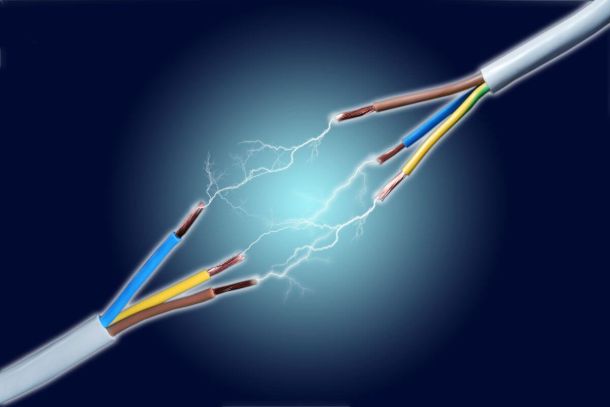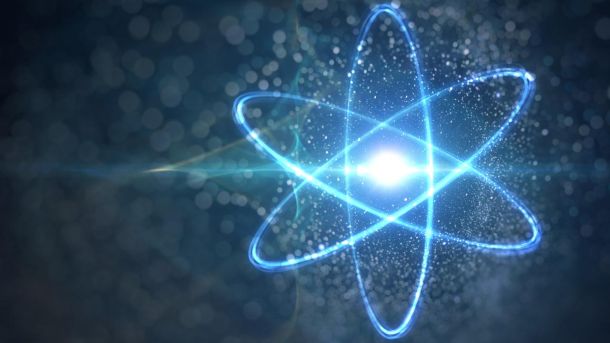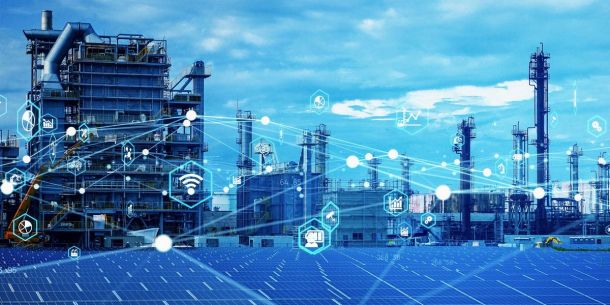INCONCRETO NEWS
Digital Applications as Vital Drivers for the Nuclear Energy of Tomorrow
Energy security and decarbonation are some of the greatest challenges of our time. In a context of increasing international instability, it is necessary to ensure that these goals are achieved with all the possible means, while preserving energy sustainability and supply for all consumers.
Already providing about 10% of global electricity generation, the nuclear energy represents a solid opportunity for fighting against climate change.
The possibilities for further expansion and growth of this energy sector were already highlighted by INCONCRETO in the interview with Carlos Soriano, General Manager at TES Technical Engineering Support. Presenting the case of France, in this dialogue we underlined that the nuclear energy has a unique potential of producing emissions-free power.
In fact, the intermittent nature of wind and solar PV necessitates the support of dispatchable resources, even if these sources are at the forefront in the transition away from fossil fuels. Nuclear energy, currently the second largest source of low-emission power after hydropower, offers both dispatchability and significant growth potential. Beyond the risks associated with safety and the treatment of radioactive waste – which of course remain fundamental and must not be underestimated –, it also proves to be a stable and controllable source.
Nevertheless, as the International Energy Agency highlights, this source of energy faces a contrasted future. Nuclear power projects often struggle to compete with quicker-to-install alternatives like natural gas or modern renewable energy sources due to their significant initial costs, extended development timelines, and frequent delays. Public resistance in numerous countries further complicates the adoption of nuclear energy. If a certain and sustainable trajectory for nuclear power is not implemented, billions of tonnes of extra carbon emissions might be released into the atmosphere, exacerbating climate change and hindering global efforts to reduce greenhouse gas emissions.
On the contrary, in countries where it is embraced, nuclear power can play a crucial role in maintaining secure and diverse low-emission electricity systems.
It is on the basis of this possibility that, at the European level, after months of debates, in February this year the European Parliament, the Council of the European Union, and the European Commission have agreed to label nuclear power as ‘strategic’ for EU’s decarbonisation. The decision was reached during negotiations related to the Net-Zero Industry Act (NZIA), the European initiative designed to accelerate the implementation of technologies essential for achieving the EU’s net-zero emissions target by 2050. This legislative proposal emerged as a response to the substantial US green subsidy program, the Inflation Reduction Act, as well as the Chinese attempt to dominate the global market in the production of clean technologies (including batteries, heat pumps, and solar panels).
The European NZIA encompasses tried and tested nuclear technologies as well as future third and fourth generation ones, such as Small Modular Reactors (SMRs) as one of the most valued forms of advanced nuclear reactors.
Nuclear infrastructures are closely linked to advancements in digital technologies, which can significantly impact their success.
Designing and maintaining Nuclear Power Plants (NPPs): the role of digital tools
It is paramount to make sure that digital resources are efficiently implemented in the nuclear energy market. Therefore, as it is proposed by the authors of the recent paper “Digitalization as an aggregate performance in the energy transition for nuclear industry” (2023 Elsevier Ltd.), some new nuclear infrastructure issues should be taken into account when deploying nuclear programs at the International Atomic Energy Agency. The proposed issues include National Position, Nuclear Safety, Management, Funding and Financing, Legal Framework, Safeguards, Radiation Protection, Regulatory Framework, Electrical Grid, Human Resource Development, Stakeholder Involvement, Site and Supporting Facilities, Environmental Protection, Emergency Planning, Nuclear Security, Nuclear Fuel Cycle, Radio Waste Management, Industrial Involvement, Procurement, Digital Values and Equalities.
It is therefore suggested to deploy a specific “Milestones Approach”, allowing to address such issues related to nuclear infrastructure, with specific activities required in each of the three phases, and integrating digital values and equality in all the factors contributing to nuclear technology advancement.
Three Phases and Three Milestones IAEA approach

At present, the physical construction phase of a NPP can take around 10 years to complete, particularly when following a Light Water Reactor (LWR) construction process. This includes the design, licensing, and deployment of Small Modular Reactors (SMRs).
In the course of these processes, digital infrastructure enhances various aspects and growth opportunities. As the human resources sector undergoes an energy transition from the physical to the digital realm, workers’ training is expected to increasingly rely on advanced digital systems. This shift is going to enable digital infrastructure to offer solutions for global energy security and expand opportunities for Research and Development (R&D) projects at the organizational level.
It is important to explore the possible integration of all kinds of hybrid technologies, such as Machine Learning (ML), Artificial Intelligence (AI), Augmented Reality (AR), High-Performance Computing (HPC), and Quantum Computing (QC). Considering the multiple possibilities they offer, they can further unlock numerous benefits and make the digital nuclear environment more efficient and sustainable.
A specific model is illustrated: the Nuclear Digital Doughnut Transformation (ND2T).
ND2T is capable of setting a framework to identify criteria for regulation, attributes and enabling technologies assessment in various aspects of Nuclear Power Infrastructure Development (NPID). These different components allow to standardize and modularize the digital energy transition process, creating a structured method for selecting criteria applicable to specific aspects of nuclear energy projects. Harmonizing codes and standards can facilitate the deployment of advanced nuclear technology at the industrial level. This encompasses digital manufacturing processes, commissioning and decommissioning protocols, advanced construction methods, nuclear safety system analysis, instrumentation and control equipment, and other robust technologies supporting the digital transition.
The authors suggest that integrating the ND2T model with future nuclear reactor designs can truthfully improve the operations of the existing NPPs.
Nuclear Digital Doughnut Transformation components

The use of Digital Twin (DT) technologies is critical since it enhances digital integration, while providing numerous advantages in the nuclear plant construction processes. They have recently begun to be utilized in the nuclear sector and are being applied to both advanced reactors and to the existing fleet of light-water reactors.
These technologies require the mastery of massive volumes of ever-evolving data from the study phases to commissioning. Accurate and precise data collection and management are decisive all through the value chain, from the decision to commit to a nuclear project, through the start of construction, to the production of electricity. A large variety of solid and cutting-edge simulations allow to create multiple scenarios enabling better understanding of operating dynamics and informing decision-making.
The example of the leading project chaired by the R&D department of EDF in France is particularly telling. Between 2020 and 2024, relying on the most detailed models, the French Group has been piloting an initiative aimed at producing a digital twin for a nuclear reactor. Culminated in June this year, this initiative has provided a study platform offering multi-scale and multi-physics code coupling, a training simulator so that operators can train on a digital twin representative of the physical state of the unit, an advanced visualization module of physical phenomena in the primary circuit.
This programme has been financed by the French Future Investment Program (PIA) by Bpifrance and conducted with the support of the French Association of Nuclear Industries – Groupement des Industriels Français de l’Energie Nucléaire (GIFEN) as well as by the French Nuclear Valley competitiveness cluster.
Integrating innovative digital technologies in Small Modular Reactors (SMRs)
With more than 80 designs and concept projects in various stages of development around the world, small modular reactors are consistently being explored now.
Small Modular Reactors (SMRs) are defined as small nuclear reactors with a maximum output of 300 Megawatt electric (MWe) and the capacity to generate 7.2 million kWh per day. In contrast, large nuclear power plants typically start from 700Mwe and can exceed 1,000 MWe, producing around 24 million kWh per day.

SMRs can use various coolants, including light water, liquid metal, or molten salt, depending on the specific technology. Generating heat through nuclear fission reactions, they can then be used directly or converted into electricity.
As the International Atomic Energy Agency (IAEA) underlines, SMRs can be prefabricated, transported, and installed on-site, which makes them more economical to develop compared to large power reactors that are often tailored to specific locations and prone to construction delays. Their smaller footprint also allows SMRs to be placed in areas that are not suitable for larger nuclear power plants, which includes those areas where there is limited grid coverage.
Their modular advantage allows systems and components to be factory-assembled and then transported as a unit to the installation site. Consequently, SMRs can provide significant cost and construction time savings and can be deployed incrementally to match increasing energy demand.
Compared to existing reactors, proposed SMR designs are generally simpler, with safety concepts often relying more on passive systems and inherent safety features, such as low power and operating pressure.
SMRs are incorporating AI and machine learning (ML) to introduce innovative features. As Rodney Busquim e Silva, Information Technology Security Officer at the IAEA, declares, “One challenge for deploying SMRs is how to accelerate the development of their technology and demonstrate their level of readiness while maintaining compliance with nuclear safety and security standards. This reinforces the need for digital instrumentation and control and computer security solutions to be considered and maintained during the SMR life cycle.”
The innovative designs of SMRs depend on digital instrumentation and control (I&C) systems, which enable their advanced features. The heightened use of digital technologies for automation, remote supervisory control, maintenance, and other novel capabilities underscores the necessity for computer-based solutions. Since some SMRs are intended for deployment in isolated areas and with a reduced on-site staff, they necessitate constant and reliable remote monitoring. Due to the reliance on digital I&C systems, implementing computer security measures is essential for ensuring secure communication between the SMR site and a support centre.
It is crucial to ensure that these digital innovations are under constant vigilance to maintain the integrity of sensitive assets and safeguard information at nuclear and radiological facilities. Therefore, the human element remains key, providing an accurate and secured supervision of SMRs functioning, while individuals have the time to focus on high-value activities, thus improving overall plant efficiency.
The potential applications of AI for NPPs, including SMRs, are extensive in terms of enhancing efficiency and maintaining a consistent electricity supply by adjusting power generation based on real-time data, such as consumer demand, weather conditions, and equipment performance, but also optimizing fuel consumption and maximizing the energy output of reactors.
Discover the expertise of INCONCRETO and its Partners expertise in capital project optimization in the Energy sector
Connect with our team
We combine technical expertise with large program execution practices, improving predictable outcomes and steering profitability on Capex/Opex project investments
For further readings, you may consult these sources:
- Nuclear power officially labelled as ‘strategic’ for EU’s decarbonisation, by Euractiv
- Nuclear Power, by IEA
- Digitalization as an aggregate performance in the energy transition for nuclear industry, in Nuclear Engineering and Technology (2023 Elsevier Ltd.)
- Nuclear energy can be the turning point in the race to decarbonize, by WEF
- Enhancing Nuclear Power Production with Artificial Intelligence, by IAEA
- Bientôt un jumeau numérique de chaque réacteur, by EDF
- Securing Digital Technologies of the Next Generation of Nuclear Reactors, by IAEA
- SMR Digital Technologies and Computer Security: The Interlinkages, by IAEA
Latest News

Semiconductors Today: Global Industry Dynamics and Strategic Value Chains

Mining Today, Powering Tomorrow: The Global Race for Transition Minerals
Newsletter
© INCONCRETO. All rights reserved. Powered by AYM


















































